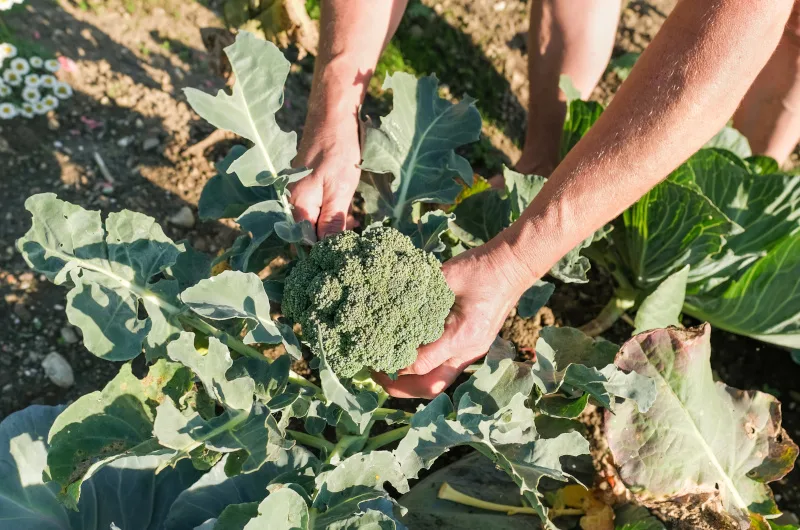How To Grow Broccoli
If you’re an avid gardener or simply someone who enjoys homegrown produce, then learning how to grow broccoli is a valuable skill to have. Broccoli, scientifically known as Brassica oleracea, is a beloved cole crop that is packed with essential nutrients and widely considered to be a superfood. In this comprehensive guide, we’ll walk you through the entire process of planting, tending to, and harvesting broccoli, ensuring you can enjoy the satisfaction of cultivating this versatile vegetable right in your own garden or allotment.
Planting Broccoli: Getting Started
Growing broccoli requires a bit of planning and patience, but the rewards are undoubtedly worth it. To begin, select a suitable planting location that receives full sun throughout the day. Broccoli thrives in well-draining, fertile soil with a slightly acidic to neutral pH. The ideal pH range for broccoli cultivation is between 6.0 and 7.0, ensuring optimal nutrient absorption and overall plant health.
Depending on your climate, you can choose to plant broccoli either as a spring or autumn crop. In warmer southern regions of the UK, planting in the autumn can yield a bountiful harvest during the cooler months. Conversely, if you live further north and suffer from harsher winters, opt for a spring planting. Regardless of the season, it’s crucial to time your planting to avoid the hottest part of the year, as high temperatures can hinder successful growth.
Sowing Seeds and Young Plant Care
Broccoli can be grown from seeds, which are widely available at garden centres or can be purchased online. Sow seeds indoors about 6 to 8 weeks before your intended transplanting date. This allows the young plants to establish themselves before facing the challenges of the garden environment. Refer to the seed packet for more detailed guidance on when exactly to sow your chosen variety.
Use seed-starting trays or small pots filled with a good quality seed starting mix. Plant the seeds about half an inch deep, and ensure they receive adequate moisture and light. As the seedlings grow, provide plenty of light to prevent them from becoming leggy and weak.
Transplanting and Providing Adequate Space
Once your young broccoli plants have developed a few sets of true leaves, they are ready to be transplanted into your garden. Choose a well-prepared garden bed with fertile soil. Prepare the soil by adding compost or well-rotted manure to provide essential nutrients.
Plant the young broccoli plants at least 18 to 24 inches apart, giving them plenty of space to grow. Broccoli plants can become quite large, especially if you’re aiming for those impressive central heads.
Caring for Growing Broccoli
Broccoli plants require consistent care to ensure healthy growth and a bountiful harvest. Here are some essential steps to take throughout the growing season:
1. Watering: Keep the soil consistently moist, especially during the warmer months. Regular, deep watering is key to preventing the soil from drying out and ensuring the plants have enough water to support their growth.
2. Fertilising: Apply a balanced fertiliser about three weeks after transplanting and then again when the central heads start to form. You can also use a side-dressing of compost or a slow-release fertiliser to provide a steady supply of nutrients.
3. Weeding: Regularly weed your broccoli bed to prevent competition for nutrients and space. Weeds can hinder the growth of your broccoli plants, so keeping the bed clean is essential.
4. Mulching: Apply a layer of organic mulch, such as straw or shredded leaves, around your broccoli plants. Mulching helps retain soil moisture, suppress weeds, and maintain an even soil temperature.
5. Pest and Disease Management: Broccoli is susceptible to certain pests, such as aphids, cabbage worms, and flea beetles. Inspect your plants regularly and take appropriate measures to control these pests, such as using row covers or natural predators. Additionally, practicing crop rotation can help prevent disease buildup in the soil.
Harvesting Broccoli and Maximizing Yields
Harvesting broccoli is an exciting moment for any gardener. The central head, which is the main edible portion, should be harvested while the buds are still tightly packed and before the yellow petals of the flowers start to show. This is the stage when the broccoli head is at its prime, offering the best flavour and texture.
To harvest, use a sharp knife or garden shears to cut the central head at an angle about 5 to 8 inches below the head. This encourages the growth of side shoots, also known as “florets,” which can continue to provide you with a tasty broccoli harvest even after the central head has been cut.
Additionally, harvesting the central head prompts the plant to allocate more energy to producing side shoots, effectively maximizing your broccoli yield. These side shoots are just as delicious and nutritious as the main head and can be harvested as they reach a suitable size.
Broccoli as a Culinary Delight
Broccoli is not only a nutritious powerhouse but also a versatile ingredient in the kitchen. Its earthy flavour and crisp texture make it a perfect addition to various dishes. Whether steamed, sautéed, roasted, or used as a crunchy addition to salads, broccoli adds a nutritious touch to your meals. It’s not just a side dish; it can also shine as the star of the show when used in pasta dishes, stir-fries, and casseroles. Cheese also really compliments the flavour of broccoli; try a grated strong cheddar for a real hit of umami flavour.
Exploring Broccoli Varieties
Broccoli comes in various varieties, each with its own unique characteristics. Some varieties are bred for their large central heads, while others focus on producing abundant side shoots. Winter varieties are specially adapted to colder climates and can withstand frost, allowing for extended harvests during late fall and even early winter.
Companion Plants for Broccoli
Companion planting involves strategically placing plants together to enhance growth, deter pests, and improve overall yields. When it comes to broccoli, consider planting it alongside compatible companions such as herbs like rosemary, thyme, and dill. These herbs can help repel pests that commonly affect broccoli, creating a more robust garden ecosystem.
Conclusion
Growing broccoli can be an immensely rewarding experience, offering you not only a delicious addition to your meals but also a sense of accomplishment as you watch your plants thrive. By following the steps outlined in this guide, from planting broccoli seeds to nurturing young plants and ultimately harvesting nutrient-packed heads, you’ll become a successful broccoli cultivator in no time. Remember, a little care and attention go a long way in ensuring a bountiful broccoli harvest that will grace your table for seasons to come. So, roll up your sleeves, get your hands in the soil, and embark on your journey to cultivating this wonderful cole crop in your own garden.



